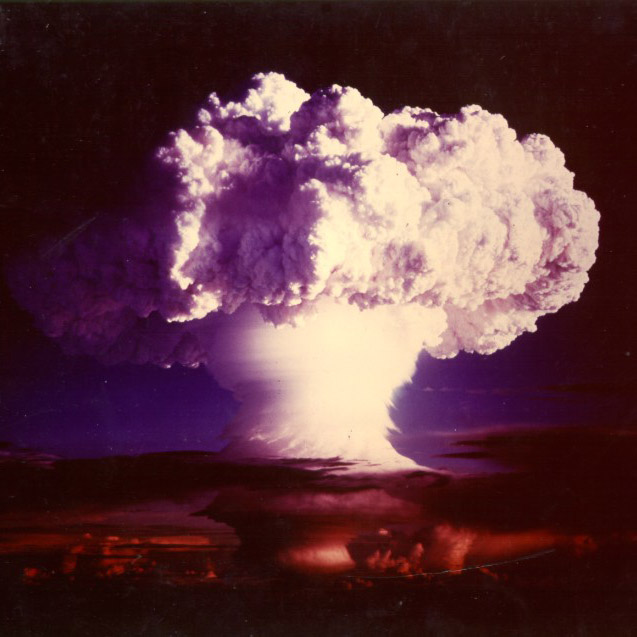Ajnštajnij
99
Es
Skupina
n/p
Perioda
7
Blok
f
Protoni
Elektroni
Nevtroni
99
99
153
Splošne lastnosti
Vrstno število
99
Atomska teža
[252]
Masno število
252
Kategorija
Aktinoidi
Barva
n/p
Radioaktivno
Da
Named after Albert Einstein
Kristalna struktura
n/p
Zgodovina
Einsteinium was discovered as a component of the debris of the first hydrogen bomb explosion in 1952.
It was identified by Albert Ghiorso and co-workers at the University of California, Berkeley in collaboration with the Argonne and Los Alamos National Laboratories, in the fallout from the Ivy Mike nuclear test.
The new element was produced by the nuclear explosion in miniscule amounts by the addition of 15 neutrons to uranium-238.
It was identified by Albert Ghiorso and co-workers at the University of California, Berkeley in collaboration with the Argonne and Los Alamos National Laboratories, in the fallout from the Ivy Mike nuclear test.
The new element was produced by the nuclear explosion in miniscule amounts by the addition of 15 neutrons to uranium-238.
Elektroni po lupinah
2, 8, 18, 32, 29, 8, 2
Razporeditev elektronov
[Rn] 5f11 7s2
Einsteinium is the first divalent metal in the actinide series
Fizikalne lastnosti
Faza snovi
Trdnina
Gostota
8,84 g/cm3
Tališče
1133,15 K | 860 °C | 1580 °F
Vrelišče
-
Talilna toplota
n/p kJ/mol
Izparilna toplota
n/p kJ/mol
Toplotna kapaciteta
- J/g·K
Zastopanost v Zemljini skorji
n/p
Zastopanost v vesolju
n/p

Zasluge za slike: Wikimedia Commons (National Nuclear Security Administration)
Einsteinium was first observed in the fallout from the Ivy Mike nuclear test
CAS številka
7429-92-7
PubChem CID številka
n/p
Atomske lastnosti
Atomski polmer
-
Kovalentni polmer
-
Elektronegativnost
1,3 (Paulingova lestvica)
Ionizacijski potencial
6,42 eV
Atomski volumen
28,5 cm3/mol
Toplotna prevodnost
0,1 W/cm·K
Oksidacijska stanja
2, 3
Uporabe
Einsteinium is mainly used for scientific research purposes.
The rare isotope einsteinium-254 is favored for production of ultraheavy elements.
Einsteinium-254 was used as the calibration marker in the chemical analysis spectrometer of the Surveyor 5 lunar probe.
The rare isotope einsteinium-254 is favored for production of ultraheavy elements.
Einsteinium-254 was used as the calibration marker in the chemical analysis spectrometer of the Surveyor 5 lunar probe.
Einsteinium is harmful due to its radioactivity
Izotopi
Stabilni izotopi
-Nestabilni izotopi
240Es, 241Es, 242Es, 243Es, 244Es, 245Es, 246Es, 247Es, 248Es, 249Es, 250Es, 251Es, 252Es, 253Es, 254Es, 255Es, 256Es, 257Es, 258Es